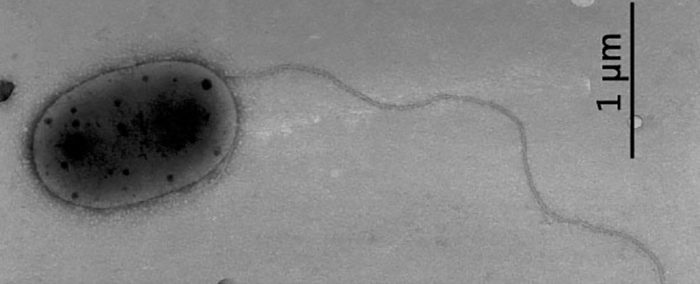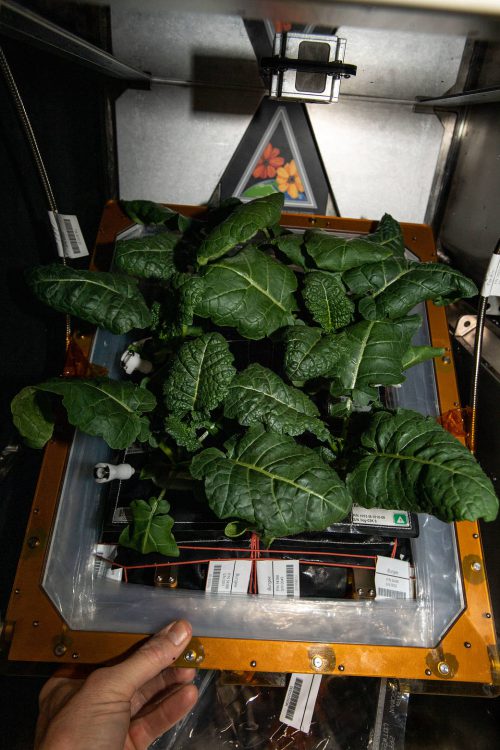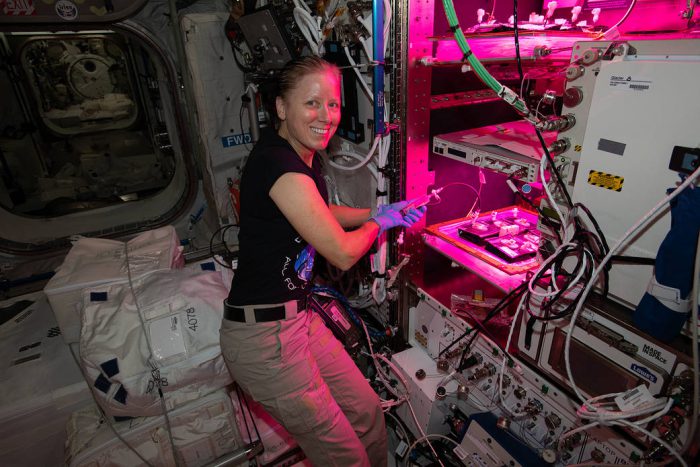Recent samples from the International Space Station (ISS) have revealed something quite exciting. Unknown microbes—microscopic living things never before seen on Earth.
In total, there were three new species of bacteria, which have been named IF7SW-B2T, IIF1SW-B5 and IIF4SW-B5. (No, there won't be a test on their names at the end of this post, we promise.)
So strange tiny microbes living in space? Is this something to be worried about? Actually, no! They could very well be the secret ingredient that allow astronauts to successfully grow their own food on future missions on the Moon and even Mars!
What are microbes?

Meet one of the new bacterium found on the ISS, currently called Methylobacterium jeotgali. (Aslam et al, Int. J. Syst. Evol. Microbiol. 2007)
Before we get into what these new microbes can potentially do for us, let's get into what microbes are. Because they are everywhere.
We are literally surrounded by them. Covered in them. Breathing and drinking them in constantly.
They are the itsy-bitsy organisms that are both the smallest and most common living things in the world. For context, your body is home to about 100 trillion of them right now!
Some of these fellows are viruses and fungi. Protozoa, too. But the most common microbes are bacteria. Now, it is true that some of these types of microbes—commonly known as germs—can make us sick. But many of them—especially the bacteria—are nothing to be afraid of. In fact, they're essential!
For example, our stomachs are full of vital bacteria that aid in digestion and the absorption of nutrients. Certain bacteria also help plants survive and thrive. Bacteria like the ones found on the ISS!
Plant protectors

Want healthy plants like these mustard greens on the ISS? Bacteria is really important! (NASA)
Though the ISS bacteria are new, they are closely related to a group known as Methylobacterium. These friendly fellows help plants absorb elements like nitrogen and protect them from diseases and infections. In short, they are like fertilizers—agents added to soil to help plants grow healthy and strong.
That stuff is helpful for any garden, forest, or farm. But in an extreme environment like space? They're essential.
This is why scientists are really thrilled by this discovery. Right now, experimental technology, such as VEGGIE, is being tested to allow astronauts to grow their own food in space and on other worlds. In these huge missions, it could be tiny, helpful bacteria like this that is the key to future gardens on the Moon and Mars!
 Astronaut Shannon Walker tends to the VEGGIE system on board the ISS. The new bacteria could be helpful in growing healthy plants in hostile environments like space. (NASA)
Astronaut Shannon Walker tends to the VEGGIE system on board the ISS. The new bacteria could be helpful in growing healthy plants in hostile environments like space. (NASA)









